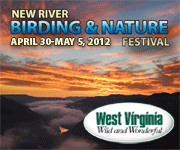A canoe is a floating blind. You're there, but not there for the wildlife. They're much less afraid of a silent seated half-human in a little barque than they'd be of a walking whole human. You're sort of a water centaur, blending beautifully in.
I was standing on the pier at Lakeside, Ohio, when a couple of local folks started up a conversation. A cormorant flew by. The man exclaimed, "I HATE those birds!"
Really? Why?
He launched a litany about how they "clean out all the fish" and "crap all over the islands and ruin them."
Oh.
I guess you don't eat fish or crap, either? But I didn't say that.
Instead, I said, "Hmm. Lots of people say that. But they overwhelmingly eat fish that people aren't interested in. And yes, they crap a lot. Did you know they're actually small pelicans?"
At this his wife piped up. "You
love pelicans!" Which was sweet and helpful of her, and it gave me a silent inward chuckle.
I thought somebody had to stick up for the cormorant, but I knew he wasn't going to change his view of them in one conversation on a pier sticking out into Lake Erie.
Well, I, for one, like cormorants. Especially when they fly gracefully against a white pine backdrop, which is not very often.
Eastern amberwing, Erythemis tenera.
Eastern pondhawk, E. simplicicollis. I adore its cool slate-blue body and green face. It reminds me of a decomissioned World War II fighter jet, with the paint oxidized, sitting in some little midwestern town green, tethered and forever hovering on a tilt 10' over the clipped grass.
The snazzy Halloween pennant, Celithemis eponina. Just getting my feet wet in dragonflies. Could be wrong. Often wrong.
Eastern spiny softshell. Probably the coolest-looking turtle in Ohio. Spooky, too. I was happy to get a photo that showed its wary eye before it slipped backward into the drink.
a gorgeous little red-eared slider, the only other turtle species I saw this day. You'd think it'd be lousy with painted turtles and mud turtles, but not today. And come to think of it I don't know that I've seen painted turtles here. Still thinking about that.
A great blue steps along a log, one of the snags I'm talking about that are in the process of falling down. Sigh. Would they could stand forever. But every time I canoe at North Bend, I work my way around more logs.
You beautiful lanky thing you. I've always loved lanky.
Two mallard drakes in eclipse plumage rest. Thank you for leaving your fabulous violet blue speculae out for me to admire. No matter what miserable molt mallards might be in, they keep that badge shining.

















































Thursday, December 4, 2014
7 comments